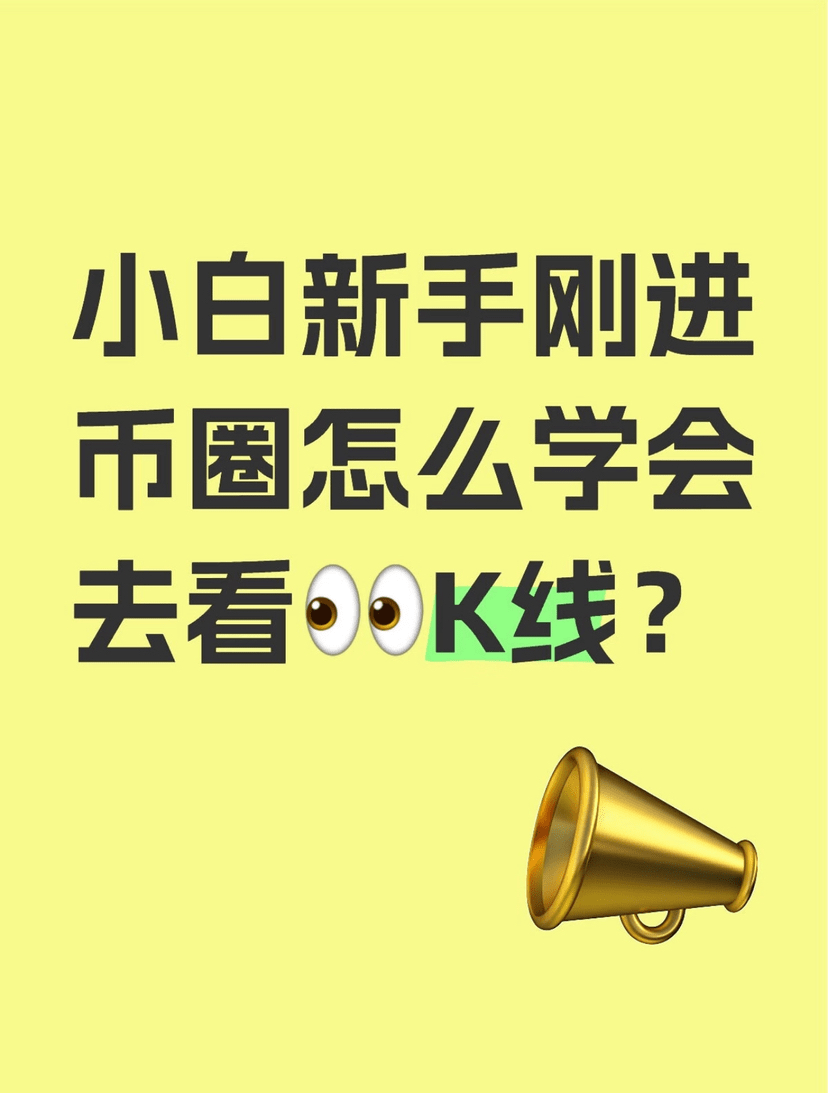Newbies must learn to read candlesticks.
How to learn to read candlesticks?
For newcomers to the cryptocurrency world, learning candlesticks (candle charts) is the foundational skill for analyzing market trends and making trading decisions.
1. Understand the basic structure of candlesticks
Composition of a single candlestick:
Opening Price: The price at the start of the market.
Closing Price: The price at the end of the market.
Highest Price: The highest point during the period.
Lowest Price: The lowest point during the period.
Body: The area between the opening and closing prices, representing the comparison of bullish and bearish forces.
Bullish Candlestick (Green/White): Closing price > Opening price, typically indicates an increase.
Bearish Candlestick (Red/Black): Closing price < Opening price, typically indicates a decline.
Wick (upper wick/lower wick): Lines extending outside the body, reflecting the range of price fluctuations.
Time Period:
Common Periods: 1 minute, 5 minutes, 1 hour, 4 hours, daily, weekly, etc., different periods reflect trends on different time scales.
2. Master key candlestick patterns
Single Pattern:
Hammer: Long lower wick, small body, appears at the end of a downtrend, may indicate a reversal.
Hanging Man: Similar to a Hammer, but appears in an uptrend, may indicate a top.
Combination Patterns:
Morning Star: In a downtrend, bearish candlestick + doji + bullish candlestick combination, indicating a bullish signal.
Evening Star: In an uptrend, a bullish candlestick + doji + bearish candlestick combination, indicating a bearish signal.
Engulfing Pattern: The next candlestick completely covers the previous one, indicating a reversal signal.
3. Combine technical indicators to enhance analysis
Moving Average (MA): 5-day, 10-day, and 30-day moving averages can determine trend direction (e.g., golden cross/death cross).
MACD: Determine bullish and bearish momentum through fast and slow line crossings and histograms.
RSI: Overbought (>70) or oversold (<30) area to assist in determining reversal points.
Trading Volume: Price increases accompanied by higher volume are more reliable.
4. Practical Steps
Choose a trading platform:
It is recommended to use TradingView (charting tool) or Binance/OKX (trading platforms) and switch between different periods to observe candlesticks.
Combine with news:
Major news (such as regulatory policies, project progress) may trigger sudden changes in candlesticks; comprehensive judgment is required.
Risk Management:
Always set stop-loss (such as breaking key support levels) to avoid blind trading on single patterns.
5. Common Misconceptions
Over-reliance on a single pattern: Needs to be combined with trends, trading volume, and other comprehensive judgments.
Ignoring Time Period: 1-minute candlesticks are noisy, daily candlesticks are more stable.
Frequent Trading: Newbies may frequently operate due to short-term fluctuations; it is recommended to observe first before acting.
Summary: Candlesticks are the foundation of technical analysis, but need to be combined with market conditions, capital management, and risk control. Initially, it is recommended to start practicing from small periods (such as 4 hours) to gradually accumulate experience. Stay patient and avoid being disturbed by short-term fluctuations. If you are new to cryptocurrency contracts, be cautious in your operations, learn more and understand more. If you have any questions, feel free to leave a comment, and we can discuss together.


